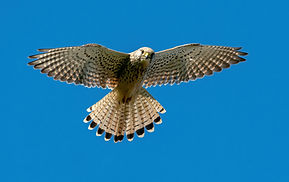Abney Park
Abney Park is one of London’s Magnificent Seven Cemeteries and it’s teeming with life.
This 32-acre Nature Reserve in the heart of Stoke Newington is home to rare birds, bees, bats and butterflies, foxes, badgers and insects. Access it via Stoke Newington Church Street or the High Street. 200,000 people are buried here.




The gothic chapel in the centre is the oldest surviving non-denominational chapel in Europe and was designed by architect William Hosking purely as a funerary chapel – not as a place of worship. He designed the chapel with a deliberate lack of bias towards any one Christian sect. There’s a covered horse and carriage entrance.

Revamp underway
The cemetery is currently undergoing a £5million revamp – a new café and community rooms are expected to open in the Spring of 2023. New workshops are being constructed for craftspeople, paths are being improved and the Gothic chapel is being restored so it’s fit to host events.
Visit the Abney Park website for more info on the restoration project.

Burials
Among those buried here are Salvation Army founder William Booth and Frank Bostock (who travelled the world with his menagerie in the late 19th c survived century – he survived lion and tiger attacks and an ape bit off his finger! – his grave is a marble lion).
Also buried here is Harry Cox who pioneered the X-ray machine, legendary firefighter James Braidwood, Betsi Cadwaladr who worked as a nurse alongside Florence Nightingale in the Crimea War and Joanna Vassa - the daughter of Britain’s first Black activist anti-slavery campaigner Olaudah Equiano (aka Gustavus Vassa).

A spectacular nature reserve
Abney Park was the first cemetery in Europe to be used as an arboretum. 2,500 trees and bushes, each labelled, were planted alphabetically around the perimeter of the cemetery and it became something of an education attraction.
The Park is home to more than 100 species of trees, 50 species of bees and fabulous bats, birds (including Sparrow Hawk, Tawny Owls and Great Spotted Woodpeckers), insects and very rare fungi. It’s not unusual to spot Kestrels, Red Kites and Merlin here
What's On
Keep an eye on The Abney Park website for events such as dawn chorus bird walks, markets, music in the chapel and plays.
A Little about the Magnificent Seven
The Magnificent Seven cemeteries were created in the 1830s and 40s to tackle London’s crisis with burial grounds. A population surge in the early 1800s and epidemics of typhus, cholera, smallpox, measles, scarlet fever and diphtheria left burial space in such short supply that illegal burials often took place in shallow graves and sometimes quicklime was thrown over bodies to help them decompose quicker! Church graveyards were filled with coffins stacked in 20-ft holes. Bodies were often cut into pieces to make way for new arrivals.
The ‘magnificent’ garden cemeteries were built around London, with investors selling burial plots to those who could afford a proper funeral – most became the cemeteries of the rich; populated primarily by aristocrats and celebrities – though there are many unmarked paupers’ graves too.



